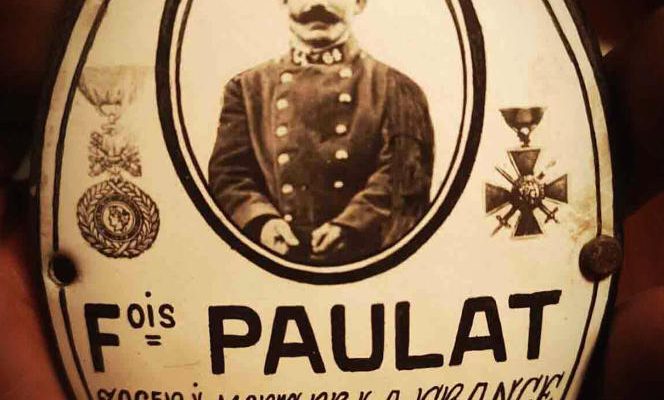During the confinement due to the Covid-19 pandemic, Jean-Pierre Mennessier did like everyone else: he hung out for hours on the Internet. This 67-year-old former soldier had long been a fan of second-hand goods and objects related to the army. It is therefore on auction and online sales sites that this inhabitant of the Somme has naturally surfed: eBay, Catawiki, Leboncoin, of course, but also Interencheres, the space for auctioneers.
What was his surprise to discover there each time, put up for auction, mortuary plaques of French people killed during the two world wars. “There, I rolled my eyes”, says the former sergeant Mennessier. The symbolism disgusts him. “We were selling the death of a soldier. »
It is true that they are beautiful, these old plates. Enamelled or porcelain, sometimes painted by hand, embellished with foliage or patriotic scenes such as those found on war memorials, they are embellished with reproductions of medals issued, one might think, posthumously. “Death for France”, “Death for the Fatherland”, we read there next to a date and a place of battle. They are sometimes decorated with the photo of the deceased. Or even of a whole sibling decimated, like this plaque showing three Untran, Auguste, Paul and Bernard, who died at the ages of 21, 26 and 28. Depending on their state of preservation or their “artistic” and memorial quality, these objects sell for between 80 and 280 euros to collectors.
A network of 500 lookouts
Jean-Pierre Mennessier, we have understood, has respect for the dead. He is also a member of the French Souvenir, an association which aims to maintain the memory and the graves of soldiers killed in combat. He also has respect for the law. He knows that it is forbidden to resell such objects resulting from thefts, or even desecrations of tombs. He is not the only one to be offended by this looting: in three years, he has formed a network of watchers who spy on the auctions, whether physical or digital.
Today, nearly 500 people criss-cross the territory and the web. “Points, boasts Jean-Pierre Mennessier. Among them are former gendarmes or former customs officers, for example. » These sentries alert him to the slightest discovery.
To date, they have recovered nearly 150 grave markers. The last was last week: the plaque of Bernard Biados, who died on March 15, 1915 at the age of 31, stolen from a cemetery in the Pyrénées-Orientales, was intercepted while it was on sale in the ‘Isere.
You have 51.62% of this article left to read. The following is for subscribers only.
